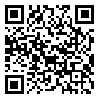Volume 2, Issue 6 (12-2011)
jemr 2011, 2(6): 19-42 |
Back to browse issues page
Download citation:
BibTeX | RIS | EndNote | Medlars | ProCite | Reference Manager | RefWorks
Send citation to:



BibTeX | RIS | EndNote | Medlars | ProCite | Reference Manager | RefWorks
Send citation to:
komijani A, tavakoliyanh H. Testing the Asymmetries in Central Bank Reaction Function:The Case of Iran. jemr 2011; 2 (6) :19-42
URL: http://jemr.khu.ac.ir/article-1-388-en.html
URL: http://jemr.khu.ac.ir/article-1-388-en.html
1- Tehran University
2- ,tavakoliyanh@ut.ac.ir
2- ,
Abstract: (23625 Views)
According to Taylor (1993) rule, the monetary authority responds to deviations of output and of inflation from their targets through nominal interest rate fluctuations regarded as policy instrument. Another specification that has received considerable attention is that policymakers may have asymmetric preferences with regard to their objectives during recessions and expansions. Since according to Law for Usury (Interest) Free Banking of Iran, the objective of the central bank is not the control of interest rate, instead it is money growth rate which is used as an instrument, in this study we introduce a money growth rate reaction function and we use it to test the asymmetry in central bank behavior during recessions and expansions. The estimation results of a Markov Switching model for the period 1367:1 to 1387:2 show that the central bank sensitivity toward output is more during the recessions while its sensitivity toward inflation is more during the expansions.
Type of Study: Applicable |
Subject:
پولی و مالی
Received: 2012/01/21 | Accepted: 2012/06/9 | Published: 2012/03/15
Received: 2012/01/21 | Accepted: 2012/06/9 | Published: 2012/03/15
Send email to the article author
| Rights and permissions | |
 | This work is licensed under a Creative Commons Attribution-NonCommercial 4.0 International License. |






